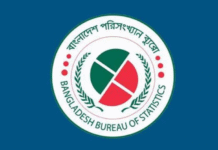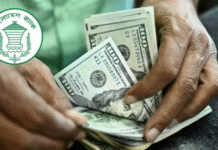
Despite the increase in input costs in the outgoing calendar year, the country’s farmers maintained the autarky in food grains production as it has been the order over the last few years.
The profit margin of the farmers is also maintaining the same falling trend as the prices at the growers end are not increasing in tandem with the rise in the production cost.
Experts observed that the trend of the lower profit margin in agriculture compared to other sectors both in rural and urban economies is posing a threat to food diversification as farmers will either gradually lose interest in agriculture or will rely more on food grains production for subsistence compared to other crops.
This year, rice production during the Boro season stood at 187.9 lakh tonnes, while the production of wheat, maize, onion, potato and vegetable were recorded 12.55 lakh tonnes, 16.5 lakh tonnes, 19 lakh tonnes, 86 lakh tonnes and 121 lakh tonnes respectively.
Of the crops, wheat production marked a significant increase by about 30 percent, according to the Department of Agriculture Extension (DAE).
The harvest of Aman rice is almost over, and the production is expected to surpass the output achieved last year, which is 129 lakh tonnes, DAE sources said.
The Department of Agricultural Marketing (DAM) data also showed that the prices of these crops were 10-25 percent higher this year compared to that of 2012. This little improvement is nothing compared to the dull prices of rice the growers experienced along with a rising trajectory of input cost in the last two years, thanks to the cut in agriculture subsidy.
The government reduced the agriculture subsidy to Tk 9,000 in the current fiscal from the amount of Tk 12,000 allocated in the fiscal 2012-13.
Centre for Policy Dialogue (CPD), the country’s apex think tank, in its budget reaction this year estimated that Tk 8,300 crore may be required as subsidy only for fertiliser in the fiscal 2013-14.
The farmers also had to endure consecutive rise in diesel price between the Boro seasons in the fiscal 2010-11 and the fiscal 2011-12 – from Tk 44.25 per litre to Tk 56 per litre.
According to Bangladesh Petroleum Corporation (BPC), about 22 lakh tonnes of diesel was used in boro farming in the 2011-12 fiscal.
About 160 crore litres of diesel were used in Boro cultivation during the fiscal year 2011-2012, at the cost of Tk. 56 per litre, according to Bangladesh Agricultural Development Corporation (BADC).
In addition to the general trend of low profit margin in rice farming, the cultivation of winter vegetables this season have led to losses due to the disruption of transportation caused by political turmoil over the last few months.
According to the DAM, the average prices of per quintal cauliflower, cabbage, bean and brinjal at district level wholesale markets were Tk 4,208, Tk 2,560, Tk 4,778 and Tk 2,942 respectively in October.
But the weekly price bulletins are showing a 30-60 percent fall in the prices in the first week of December. The DAM figures out the average district-level prices from the weekly bulletins prepared by 68 DAM stations across the country.
The December 4 bulletin by DAM station in Jessore, the vegetable basket of the country, showed that the wholesale prices of per quintal cauliflower, cabbage, bean and brinjal were at Tk 1,800-2,000, Tk 1,200-1,300, Tk 1,500-2,500 and Tk 1,200-2,000 respectively.
Usually, the prices of winter vegetables gradually decrease as the season progresses, but about 50 percent fall within two months is unusual.
According to the Bangladesh Agricultural Research Institute (BARI), nearly 40,000 tonnes of vegetable worth Tk 600 million were destroyed for a single blockade or hartal day in mid-November to December.
Talking to UNB, Brac executive director Mahbub Hossain said, “If the political crisis continues, farmers will be discouraged to go for the cultivation of vegetables. Quick transportation is crucial for the perishable agro produces. This will also hamper the prospect of crop diversification.”
A Brac survey conducted in November this year also showed that most of the farmers will increase the food grains production, rather than going for the cultivation of vegetables.
“They’ll shift a bit from the comparatively profitable cultivation of vegetables to the cultivation of rice, thought rice farming over the years has not been able to ensure the farmers with a minimum 50 percent profit margin,” he said.
“Lack of profit margin is also a threat to food security. At present, 30 percent of the country’s population is living in urban areas. The urban population is showing a high increase since the independence of the country. In 1971, only 10 percent of the population used to live in urban areas,” he said.
“If the small farmers continue to abandon the farming, which is happening in great pace due to better income in urban areas, who will feed the 30 percent urban population?” he questioned.
Economist KM Enamul Haque said the government must focus on raising the agriculture subsidy, rather than decreasing it, to keep up the interest of the farmers.
About the cultivation of crops other than food grains and vegetables, the DAE sources said the acreage and production target of pulses and oilseeds marked a slight increase in the current fiscal.
Source: UNB Connect









